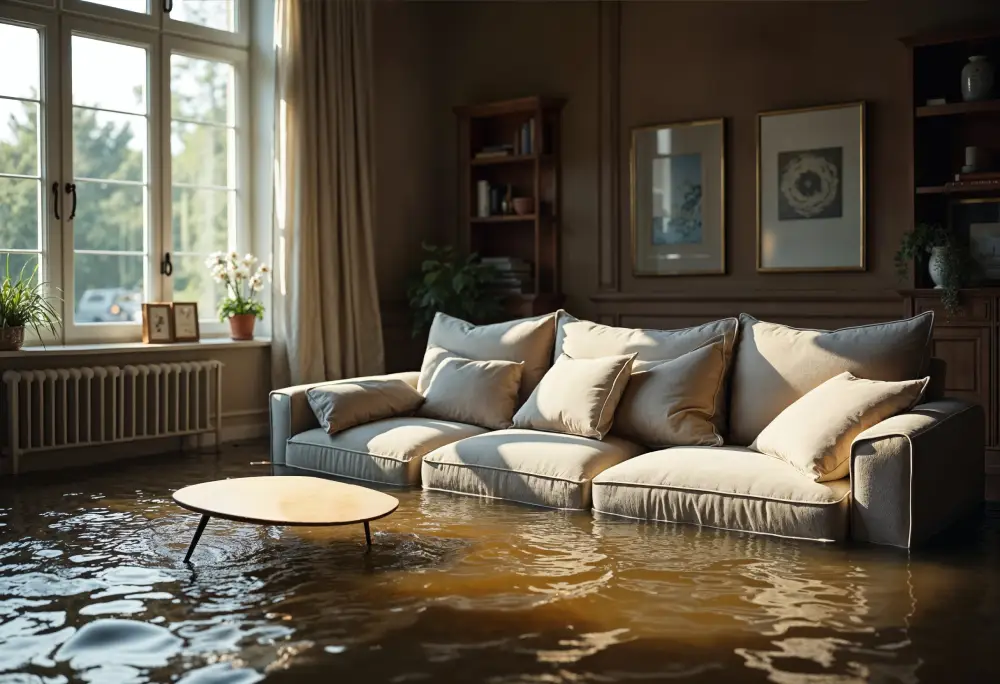
When dealing with water in your home, the damage often extends beyond what meets the eye. Water damage restoration is a comprehensive process that involves more than just drying wet areas—it also includes preventing and addressing mold growth that can follow. Combining a professional water damage restoration service with effective mold remediation ensures your home is safe, healthy, and thoroughly repaired.
Understanding the connection between water damage and mold growth is essential for anyone facing water intrusion, whether from a burst pipe, flooding, or leaks. This blog will guide you through the importance of integrating mold remediation into your water damage restoration service, what the process typically involves, and how professional help, such as from Meigel Home Improvements, a kitchen and bathroom remodeling company based in Hauppauge, NY, can provide expert care in these situations.
What Is Water Damage Restoration?
Water damage restoration is the process of repairing and restoring a property that has suffered from water intrusion. This includes removing excess water, drying and dehumidifying affected areas, cleaning, sanitizing, and repairing or replacing damaged materials. The goal of water damage restoration service is to return your home to its pre-damage condition as quickly and safely as possible. Water damage restoration often begins immediately after the source of water intrusion is stopped, to minimize damage and prevent further problems such as mold. Professional restoration experts use specialized equipment like industrial vacuums, air movers, and dehumidifiers to dry your home thoroughly. They also inspect for hidden moisture behind walls or under floors, as water often seeps into places you can’t see. A reliable water damage restoration service will assess the extent of damage, extract all standing water, and conduct drying and dehumidification before moving on to cleaning and repairs. This process not only restores your property but also helps stop mold growth at its earliest stages.Why Is Mold Remediation Critical in Water Damage Restoration?
Mold remediation is the process of identifying, containing, removing, and preventing mold growth caused by excess moisture. Mold is a common secondary problem when there is water damage because mold spores thrive in damp environments. If left untreated, mold can cause significant health risks including allergies, respiratory issues, and structural damage to your home. During water damage restoration, mold remediation is often necessary because moisture left behind creates the perfect environment for mold colonies to develop. A water damage restoration service that doesn’t include mold remediation risks incomplete restoration — with mold potentially spreading and worsening over time. Mold remediation begins with a thorough inspection, often using moisture meters or infrared technology. The affected areas are isolated using containment methods to prevent spores from spreading during cleanup. Professionals clean mold-affected surfaces with EPA-approved anti-microbial solutions, remove unsalvageable materials, and apply treatments to inhibit further mold growth. Therefore, combining water damage restoration with effective mold remediation is essential. It ensures your home is not just dry but also safe from future mold problems.The Step-by-Step Process of Combining Water Damage Restoration and Mold Remediation
Here’s how a typical combined water damage restoration service and mold remediation process looks, explained in simple terms:1. Assess and Stop the Source of Water
The first step is identifying where the water is coming from—whether a burst pipe, faulty appliance, roof leak, or flood. This step is critical because, without stopping the source, restoration cannot proceed effectively.2. Water Extraction
Using powerful pumps and industrial vacuums, all standing water is removed from your home. This is an essential stage to limit the spread of water damage and mold.3. Thorough Drying and Dehumidification
After water extraction, drying out all affected areas is crucial. This includes floors, walls, insulation, and contents. Professionals use air movers and commercial dehumidifiers to pull moisture from materials and keep humidity levels low—stopping mold spores from activating.4. Mold Inspection and Containment
Once drying begins, mold inspection is conducted to check if mold growth has started. If mold is found, containment methods such as plastic sheeting and negative air pressure machines are used to prevent spores from spreading to other parts of the home during remediation.5. Mold Removal and Cleaning
Mold remediation specialists remove the mold physically and chemically. This could mean scrubbing mold from surfaces or removing and disposing of affected drywall, insulation, or carpeting that cannot be salvaged. Specialized antimicrobial agents kill mold and prevent spores from regrowing.6. Cleaning and Sanitizing
Besides removing mold, the entire affected area is sanitized to eliminate any lingering contaminants. This includes cleaning furniture, floors, walls, and belongings exposed to water and mold.7. Repair and Restoration
The final step involves repairing or replacing damaged building materials and restoring your home to its original condition. This may include drywall replacement, repainting, flooring installation, and other finishing touches.Why Meigel Home Improvements Is a Trusted Partner for Water Damage Restoration and Mold Remediation
As a reputable kitchen and bathroom remodeling company based in Hauppauge, NY, Meigel Home Improvements offers expert water damage restoration service combined with mold remediation. Their experience in home remodeling gives them an edge in restoring damaged areas with care and precision while ensuring that mold problems are handled effectively. Homeowners can trust Meigel Home Improvements to manage the entire process—from initial water removal to final restoration—in a way that safeguards their property investment and family’s health.Preventive Tips to Avoid Water Damage and Mold Problems
While professional restoration is vital when water damage occurs, prevention is always best. Here are some easy steps you can take:- Regularly inspect plumbing, appliances, roofing, and gutters for leaks or damage.
- Maintain good home ventilation to reduce inside humidity.
- Address any water leaks immediately—don’t wait.
- Use a dehumidifier in damp areas like basements.
- Ensure your landscaping directs water away from your foundation.



